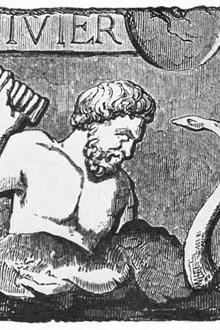Psychology by Robert S. Woodworth (top rated ebook readers .TXT) 📕

[Footnote: A series of waggish critics has evolved the following: "First psychology lost its soul, then it lost its mind, then it lost consciousness; it still has behavior, of a kind."]
The best way of getting a true picture of psychology, and of reaching an adequate definition of its subject-matter, would be to inspect the actual work of psychologists, so as to see what kind of knowledge they are seeking. Such a survey would reveal quite a variety of problems under process of investigation, some of them practical problems, others not directly practical.
Varieties of Psychology
Differential psychology.
One line of question that always interests the beginner in psychology is as to how people differ--how different people act under the same circumstances--and why; and if we watch the professional psychologist, we often find him working at just this problem. He tests a great number of individuals to see how they
Read free book «Psychology by Robert S. Woodworth (top rated ebook readers .TXT) 📕» - read online or download for free at americanlibrarybooks.com
- Author: Robert S. Woodworth
- Performer: -
Read book online «Psychology by Robert S. Woodworth (top rated ebook readers .TXT) 📕». Author - Robert S. Woodworth
The Project Gutenberg EBook of Psychology, by Robert S. Woodworth
This eBook is for the use of anyone anywhere at no cost and with
almost no restrictions whatsoever. You may copy it, give it away or
re-use it under the terms of the Project Gutenberg License included
with this eBook or online at www.gutenberg.org
Title: Psychology
A Study Of Mental Life
Author: Robert S. Woodworth
Release Date: February 25, 2010 [EBook #31382]
Language: English
*** START OF THIS PROJECT GUTENBERG EBOOK PSYCHOLOGY ***
Produced by Don Kostuch
[Transcriber's notes]
This text is derived from an unedited version in the Internet Archive.
Page numbers are indicated by numbers enclosed in curly braces, e.g. {99}. They have been located where page breaks occurred in the original book.
Labels and text in a figure that are not mentioned in the figure description are included as a comma separated list, as in "(Figure text: cochlea, vestibule, 3 Canals)".
Lengthy footnotes and quotations are indented.
Obvious misspellings and typos are corrected but inconsistent spelling is not resolved, as in coordinate and coördinate.
Here are the appearances of the heading levels.
Here are the definitions of some unfamiliar words (to me).
amour propre: self-esteem; self-respect.
esprit de corps: camaraderie, bonding, solidarity, fellowship.
motility (motile): moving or capable of moving spontaneously.
unwonted: unusual.
[End Transcribers's notes]
BY
ROBERT S. WOODWORTH, Ph. D.
Professor of Psychology in Columbia University
NEW YORK
HENRY HOLT AND COMPANY
1921
COPYRIGHT, 1921
BY
HENRY HOLT AND COMPANY
Printed in the U.S.A.
A few words to the reader are in order. In the first place, something like an apology is due for the free way in which the author has drawn upon the original work of many fellow-psychologists, without any mention of their names. This is practically unavoidable in a book intended for the beginner, but the reader may well be informed of the fact, and cautioned not to credit the content of the book to the writer of it. The author's task has been that of selecting from the large mass of psychological information now available, much of it new, whatever seemed most suitable for introducing the subject to the reader. The book aims to represent the present state of a very active science.
Should the book appear unduly long in prospect, the longest and most detailed chapter, that on Sensation, might perfectly well be omitted, on the first reading, without appreciably disturbing the continuity of the rest.
On the other hand should any reader desire to make this text the basis of a more extensive course of reading, the lists of references appended to the several chapters will prove of service. The books and articles there cited will be found interesting and not too technical in style.
Much advantage can be derived from the use of the "Exercises". The text, at the best, but provides raw material. Each student's finished product must be of his own making. The exercises afford opportunity for the student to work over the material and make it his own.
A first or preliminary edition of this book, in mimeographed sheets, was in use for two years in introductory classes conducted by the author and his colleagues, and was subjected to exceedingly helpful criticism from both teachers and students. The revision of that earlier edition into the present form has been very much of a coöperative enterprise, and so many have coöperated that room could scarcely be found for all their names. Professor A. T. Poffenberger, Dr. Clara F. Chassell, Dr. Georgina I. Gates, Mr. Gardner Murphy, Mr. Harold E. Jones and Mr. Paul S. Achilles have given me the advantage of their class-room experience with the mimeographed book. Dr. Christine Ladd-Franklin has very carefully gone over with me the passages dealing with color vision and with reasoning. Miss Elizabeth T. Sullivan, Miss Anna B. Copeland, Miss Helen Harper and Dr. A. H. Martin have been of great assistance in the final stages of the work. Important suggestions have come also from several other universities, where the mimeographed book was inspected.
R. S. W.
Columbia University
August, 1921
WHAT PSYCHOLOGY IS AND DOES 1
CHAPTER II
REACTIONS 21
CHAPTER III
REACTIONS OF DIFFERENT LEVELS 45
CHAPTER IV
TENDENCIES TO REACTION 68
CHAPTER V
NATIVE AND ACQUIRED TRAITS 89
CHAPTER VI
INSTINCT 105
CHAPTER VII
EMOTION 118
CHAPTER VIII
INVENTORY OF HUMAN INSTINCTS AND PRIMARY EMOTIONS 137
CHAPTER IX
THE FEELINGS 172
CHAPTER X
SENSATION 187
CHAPTER XI
ATTENTION 244
CHAPTER XII
INTELLIGENCE 271
CHAPTER XIII
LEARNING AND HABIT FORMATION 296
CHAPTER XIV
MEMORY 332
CHAPTER XV
ASSOCIATION AND MENTAL IMAGERY 366
CHAPTER XVI
THE LAWS OF ASSOCIATION 389
CHAPTER XVII
PERCEPTION 418





Comments (0)